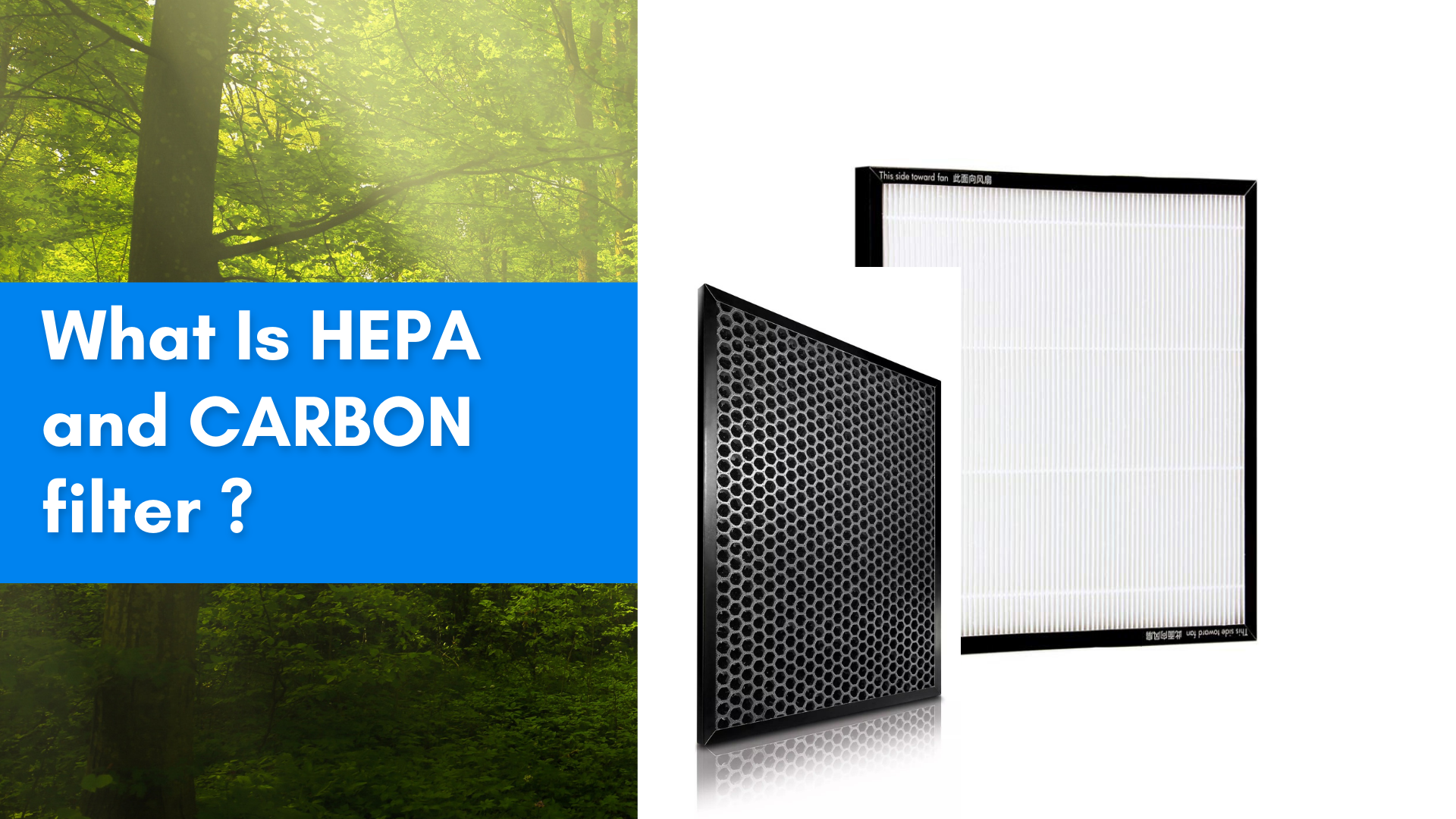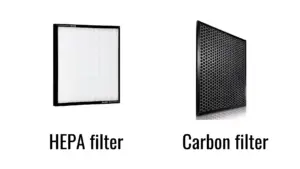HEPA and Carbon Filter
What is a HEPA filter?
HIgh-efficiency particulate air (Filter) is a pleated mechanical air filter, with the core part of the air filter HEPA cleans dangerous particles from the air which are tiny and very small, including 99.97% of dust, pollen, mold, bacteria, and other micro airborne particle size of 0.3 microns (µm)
Every HEPA filter comes with a limited lifespan. Because of this lifespan, the Filter’s efficiency decreases, and you need to replace them with a new filter.
What is the HEPA Filter value?
It defines that the Filter can catch large particles up to 0.3 and 10 Microns. This value is known as Minimum efficiency reporting values (MERVs). It is derived from the American Society of heating refrigerating and AC engineers’ test method.
The higher value of MERV shows how better the Filter is. here’s the chart of the HEPA filter value.
| MERV Rating | Average Particle Size Efficiency in Microns |
|---|---|
| 1-4 | 3.0 – 10.0 less then 20% |
| 6 | 3.0 – 10.0 49.9% |
| 8 | 3.0 – 10.0 84.9% |
| 10 | 1.0 – 3.0 50% – 64.9%, 3.0 – 10.0 85% or greater |
| 12 | 1.0 – 3.0 80% – 89.9%, 3.0 – 10.0 90% or greater |
| 14 | 0.3 – 1.0 75% – 84%, 1.0 – 3.0 90% or greater |
| 16 | 0.3 – 1.0 75% or greater |
When should you change the HEPA filter?
The HEPA filter should be replaced after 720 hours of maximum use, which means after 90 days of use and 8 hours/day of service.
As per the study, after 90 days of HEPA filter use, the filter effectiveness dropped to 4%, and it removed only 50% of particles from the room. This study was held in the Indian state of Delhi, which has the most pollution levels.
What is activated carbon?
Activated carbon catches the odors, gases, and other volatile organic compounds. This VOC includes dangerous formaldehyde and benzene.
How Activated carbon works?
The activated carbon is made for odor and VOCs removal particles that are made up of highly porous charcoal. the carbon filter is not similar to the HEPA filter it is a normal filter that adsorbs the pollutants to stick at sorbent which gets rid of unpleasant odors and gaseous pollutants this process is called adsorption. it has a tiny hole that gives the carbon an area of 300-2000m2/g that allows the gases to pass via carbon.
What is adsorption?
in adsorption, the filtered particles chemically attach to the innumerable pores in the adsorption surface. do you need a Carbon Filter?
Not everyone needs a carbon filter because it’s rare to have harmful gases or VOCs in your home. But yes,
- if you are near the source of gas pollution area or factory
- Home with Smoke and other harmful odors
- Home renovation or repainting
How activated carbon is made?
Activated carbon is made from small parts of carbon-rich materials. These materials are coconut, coal, and wood. the coconut-made carbon is better than the other two materials.
The companies blow steam via carbonaceous material to make multiple mini pockets that increase the media surface area. the 1 gram of activated carbon filter covers the surface area between 10,226-21,528 sq. ft
How to Install a carbon filter?
Cannon users can easily install the carbon filter while opening the fan. First, place the HEPA filter on, and then on the top, place the carbon filter.
Note: you should not use the Carbon filter with the original HEPA due to its low airflow rate.
in case you have a VOC problem, then use a carbon filter on the original HEPA (no HEPA filter)
Do Carbon Air Filters Work?
Yes, the carbon air filter does work. many civilizations, most of them used carbon to purify water for many years. putting carbon inside the water storage equipment will keep the water fresh and make it nice in tasting.

